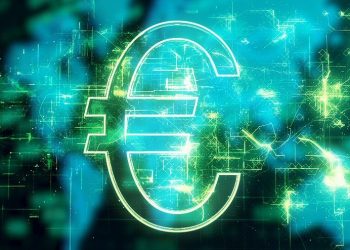When trading cryptocurrencies, one of the key factors to consider is the transaction fee, commonly referred to as the “gas fee.” Binance, one of the largest cryptocurrency exchanges globally, charges fees for transactions on its platform. Understanding these fees can help you manage your trading costs effectively. In this article, we will delve into how gas fees work on Binance, what factors influence these fees, and how you can minimize them.
What Are Gas Fees?
Definition of Gas Fees
Gas fees are the costs associated with processing transactions on a blockchain network. They compensate miners or validators for the computational power required to validate and record transactions. In essence, gas fees ensure that transactions are executed and confirmed in a timely manner.
Why Are Gas Fees Important?
Gas fees play a crucial role in the cryptocurrency ecosystem. They help prioritize transactions, especially during times of high network activity. Users willing to pay higher fees often see their transactions processed faster than those paying lower fees. This prioritization is essential for maintaining an efficient and functional network.
Understanding Binance and Its Fee Structure
Overview of Binance
Binance is a leading cryptocurrency exchange that allows users to buy, sell, and trade a wide variety of cryptocurrencies. Established in 2017, Binance has quickly gained popularity due to its user-friendly interface, extensive list of available coins, and competitive fee structure.
Types of Fees on Binance
Binance charges several types of fees, including:
Trading Fees: Fees charged for executing buy or sell orders.
Withdrawal Fees: Fees for transferring cryptocurrencies from Binance to an external wallet.
Deposit Fees: While Binance generally does not charge deposit fees, users should be aware of potential blockchain network fees when transferring coins.
Among these, trading fees and withdrawal fees are the most relevant when discussing gas fees.
How Gas Fees Work on Binance
Gas Fees in the Context of Binance
While Binance does not use the term “gas fees” explicitly for its internal transactions, it does have associated fees for trading and withdrawing cryptocurrencies. When you execute a trade on Binance, you may encounter a trading fee, which can vary depending on the type of transaction and the cryptocurrency involved.
Trading Fees on Binance
Maker and Taker Fees: Binance operates on a maker-taker model. A maker is a user who adds liquidity to the market by placing a limit order. A taker is someone who removes liquidity by executing an order at the market price.
- Maker Fees: Typically lower than taker fees.
- Taker Fees: Generally higher as they execute existing orders.
Fee Tiers: Binance offers different fee tiers based on the user’s 30-day trading volume. Higher trading volumes lead to lower fees.
BNB Discounts: Users can reduce their trading fees by using Binance Coin (BNB) to pay for fees. This can lead to significant savings.
Withdrawal Fees
When you withdraw cryptocurrencies from Binance to an external wallet, you will incur a withdrawal fee. This fee varies by cryptocurrency and can fluctuate based on network conditions. For example, Bitcoin and Ethereum may have different withdrawal fees due to varying network activity.
Factors Influencing Gas Fees
Network Congestion
One of the most significant factors affecting gas fees is network congestion. During times of high transaction volume, users may need to pay higher fees to ensure their transactions are processed quickly. For instance, if many people are trying to send Ethereum transactions at the same time, the gas fees may increase.
Type of Cryptocurrency
Different cryptocurrencies have different fee structures. For example, Ethereum gas fees can be much higher than those for Bitcoin, especially during peak usage times. Understanding the specific gas fees for each cryptocurrency can help you plan your transactions better.
Transaction Complexity
The complexity of a transaction can also influence gas fees. Simple transactions, such as sending tokens from one wallet to another, typically incur lower fees. In contrast, more complex operations, such as interacting with decentralized applications (dApps) or executing smart contracts, may require higher fees due to the additional computational resources needed.
Market Conditions
Market conditions, including the price of cryptocurrencies and overall trading volume, can affect gas fees. During bullish market trends, when more people are trading, gas fees may rise. Conversely, during bearish trends, fees may decrease as transaction volume declines.
How to Minimize Gas Fees on Binance
Choose the Right Time to Trade
Timing your trades can significantly impact gas fees. If possible, try to execute transactions during off-peak hours when network activity is lower. This can help you save on gas fees.
Use BNB for Fees
Using Binance Coin (BNB) to pay for trading fees can lead to substantial savings. Binance offers discounts for users who opt to pay with BNB, so consider holding some BNB to reduce your overall costs.
Monitor Fee Trends
Stay informed about gas fee trends on the specific blockchain networks you are trading. Websites like EthGasStation for Ethereum can provide insights into current gas prices, helping you determine the best time to execute your transactions.
Consider Layer 2 Solutions
For Ethereum users, exploring Layer 2 solutions like Polygon or Optimism can reduce gas fees. These solutions allow for faster and cheaper transactions by processing them off the main Ethereum blockchain.
Use Limit Orders
When trading on Binance, using limit orders can help you control the price at which you buy or sell. This method allows you to avoid sudden spikes in market prices and potentially higher gas fees.
See also: Does OKCoin Have a Token?
Conclusion: Navigating Gas Fees on Binance
Understanding gas fees is essential for anyone trading cryptocurrencies on Binance. While the platform may not explicitly use the term “gas fees,” the associated trading and withdrawal fees serve a similar purpose in ensuring smooth transaction processing. By considering factors such as network congestion, cryptocurrency type, and transaction complexity, you can make informed decisions that help minimize your costs.
Additionally, leveraging tools and strategies, such as using BNB for fees, monitoring market conditions, and timing your trades, can further optimize your trading experience. With careful planning, you can effectively navigate gas fees on Binance and enhance your overall trading success.
Related topics:

















